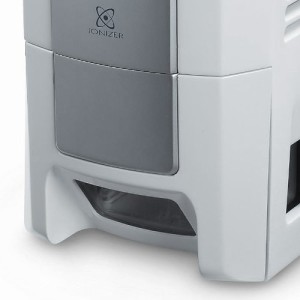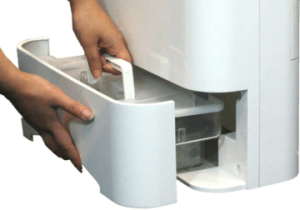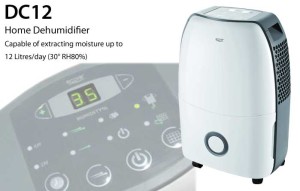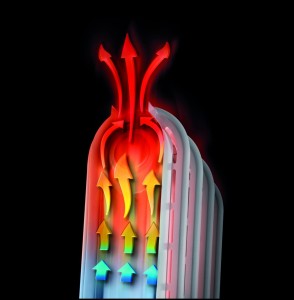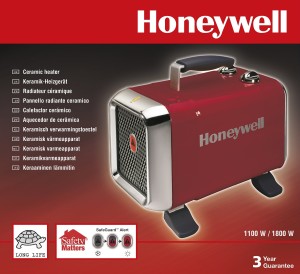Unlike other dehumidifier review websites we actually try to get our hands on the dehumidifiers that we are reviewing and we’ve had lots of fun reviewing them. 🙂
So scroll down and read through the guides, articles or reviews that are most suitable for you. For questions simply contact us as directed in the menu bar above.
Dehumidifier Guides
- The Ultimate Caravan Dehumidifier Guide
- The Ultimate EcoAir Dehumidifier Guide
- The Ultimate Garage Dehumidifier Guide
- 21 Awesome Tips on How To Buy a Dehumidifier
- 3 Car Dehumidifiers For Under £15‘
- 5 Best Dehumidifiers For Under £100
- 5 Ways To Make The Best Homemade Dehumidifier
- 9 Great Dehumidifiers Between £100 – £200
- 7 Deluxe Home Dehumidifiers Over £200
- 7 Top Industrial Dehumidifiers
- 7 Air Purifiers and Humidifiers For Under £30
Popular Articles
- Airborne Allergies How They Affect Your Body (And What To Do About Them)
- Are Dehumidifiers a Fire Risk
- Dehumidifier FAQ’s
- Dimplex Dehumidifier Recall July 2017
- Editors Choice: 4 Best Dehumidifiers
- How To Use a Dehumidifier to Dry a Room
- How Long Should You Run a Dehumidifier
- HG Mould Spray – The Best Mould Remover (Ideal for Baths and Tile Grout)
- Irish Shopppers (How to ship large items to Ireland)
- Landlord and Tenant Resource Guide
- Low Energy Dehumidifiers for Low Electricity Bills!
- Mould in Waders (6 Cleaning and Storage Tips)
- 7 Best Car Air Fresheners for the Car You Love
- 7 Top Hay Fever and Allergy Remedies For An Awesome Life
Dehumidifier Reviews UK
Editors Choice: EcoAir DD122MK5
Desiccant Dehumidifiers (Great for temps under +-18C)
- De’Longhi DNC65
- EcoAir Eco DD122FW
- EcoAir DD122 Mini
- EcoAir DD122 MK5
- EcoAir DD128
- EcoAir Eco DD322FW Simple
- EcoAir Eco DD322FW Classic
- Meaco DD8L
- Meaco DD8L Junior
- Meaco DD8L Zambezi
- Toyotomi TDZ-80
- Toyotomi TDZ-110
Compressor Dehumidifiers (Super for temps over +-18C)
- DeLonghi DEM10
- Delonghi Dex12
- Dimplex Forte 10L DXDH10N
- Duracraft TEC16E
- Ebac 2650e
- Ebac 2850e
- Ebac 3850e
- EcoAir DC12
- EcoAir DC18
- EcoAir DC202 Hybrid
- ElectriQ 10L Digital
- Home Treats Portable
- Home Treats 12L Portable
- Igenix IG9805
- Inventor 12L
- Inventor 20L
- Inventor 50L
- Meaco 10L Small Home Dehumidifier
- Meaco 12L AH
- Meaco 12L Low Energy
- Meaco 20L Low Energy
- Meaco 25L Dehumidryer
- Prem-I-Air ‘Xtreem 10’
- PureMate PM 420
- Toyotomi TDC-100 Compact
- Trotec TTK 50 E
Mini Dehumidifiers (Suitable for small spaces i.e wardrobes, under stairs etc)
- AirPro Mini Compact
- Duronic DH05 Mini
- Futura 2L Compact
- Hysure 1500ml
- Meaco ‘Mini D’
- Pro Breeze 500ml Compact
- Pro Breeze 3000ml
- Unibond Aero 360 Moisture Absorber
- VicTsing 2L Mini Dehumidifier
Industrial, Commercial and Pool Dehumidifiers
Dehumidifier Reviews USA
- Danby DDR50B3WP
- EcoSeb DD122EA
- Frigidaire FAD504DWD
- Frigidaire FAD704DWD
- Frigidaire FFAD7033R1
- Ivation IVADM45
- Keystone KSTAD50B
- Keystone Dehumidifier with Lasko Tower
Air Purifier Reviews
- Careforair Rainbow Breezer
- EcoAir DC202 Hybrid
- Fellowes AeraMax DX5
- Futura Air Purifier
- Meaco Airvax 33X2
- MeacoClean
- Alen BreatheSmart (4 Pack) USA
Radiator and Heater Reviews
- Dimplex FX20V Wall Mounted Heater (Ideal for Bathrooms)
- De’Longhi Vento V550715 (Ideal for Small Room)
- De’Longhi Bambino TRN0505M (Ideal for Small Room)
- Dimplex Cadiz Eco (Ideal for Medium Room)
- De’Longhi Dragon-4 TRD4 1025T (Ideal for Large Room)
- Glen 500W Skirting Heater
- Honeywell HZ510E Heavy Duty (Ideal for Small / Medium Room)
- Prem-I-Air 2.5kW Eh1364 (Super Energy Efficient)
Air Conditioner and Fan Reviews
- EcoAir ECO8P 8000 BTU Portable Air Conditioning Unit
- HoneyWell HHV 180E Pro Series
- Honeywell HO-5500RE Oscillating Tower Fan
- Honeywell HS-216E Oscillating and Tilt Stand Fan
- Honeywell HT900E Turbo Fan
- Igenix IG9900 9000 BTU Portable Air Conditioning Unit
- Pioneer Air Conditioner Inverter (USA)
- Pioneer Ductless Mini Split (USA)
Interviews
- Andrea Morgan from Citrus Content
- Ben Brandt from Rat and Mouse
- Chloe Woodhouse from Right Surveyors
- Chris Michael from Meaco
- Dorian Gonsalves from Belvoir Lettings
- Simon Shinerock from Choices
- Tom Morgan from Property Jungle
- Vanessa Warwick from Property Tribes
ByeMould Dehumidifier Videos
- Best Dehumidifier 2018 UK
- Delonghi Dem 10 Dehumidifier Features and How To Use
- Dimplex FX20V Wall Mounted Heater
- Home Treats 12L Compressor Dehumidifier with Ioniser Unboxing
- How Long Should You Run Your Dehumidifier For ?
- How To Change Inventor 12L Dehumidifier Filter
- Inventor 12L Compressor Dehumidifier Features
- Inventor 12L Compressor Dehumidifier Unboxing
- Inventor 30L Compressor Dehumidifier Unboxing
- Inventor 30L Dehumidifier Features
- Meaco 12L AH Compressor Dehumidifier Unboxing
- Meaco 25L Dehumidryer Features
- Meaco 25L Dehumidryer How To Remove Filter and Water Tank
- Meaco DD8L Desiccant Dehumidifier Filter Change
- Meaco DD8L Zambezi Dehumidifier Features
- Meaco DD8L Water Tank
- Meaco Zambezi How To Remove Filter and Empty Water Tank
- PureMate PM412 Compressor Dehumidifier Unboxing
- 21 Awesome Tips How To Buy a Dehumidifier
Subscribe to the ByeMould YouTube Channel Here
[wp_ad_camp_1]
For Black Mould on tile grout or bathroom sillicon Click Here.
To View our Radiator and Heater reviews Click Here.
To View our Air Purifier reviews Click Here.
Follow ByeMould:
Dehumidifier Guide
Dehumidifiers are essential in the UK & Ireland as our average humidity levels range from a low of 70%. to a high of 90%. This is a surprise as a relative humidity level of 40% – 60% is recommended for safe living!
Poorly build houses attribute to the problem and we often see condensation dripping down walls in showers and kitchens which can lead to severe respiratory problems especially for the elderly and those already showing asthmatic symptoms.
The fastest and probably cheapest way to bring down the humidity levels in your house is to buy a dehumidifier such as the EcoAir ECO DD122 Desiccant Dehumidifier which is suitable for almost every situation.
For those suffering from hay fever or asthma we would recommend a dehumidifier with an ioniser and anti-bacterial filter such as the EcoAir DD122MK5 or the Meaco DD8L Desiccant Dehumidifer.
Whatever your situation we have the perfect answer for you simply look through our comparison table above or type your query into the Search Box on the top right of your screen.
In order to help those with allergies such as hay fever, asthma and respiratory problems we have
also started reviewing air purifiers with the editors choice being the Meaco Airvax 33X2 due to its excellent SEFF filter.
More recently with the onset of winter we have been asked to review some oil filled radiators which heat up the room and keep the relative humidity down.
As with shopping for dehumidifiers you will find that the more expensive oil filled radiators contain the best energy saving features such as temperature sensors, multiple use 24 hour timers and enlarged fins for better air flow.
Dehumidifier Buyers Guide
Desiccant vs Compressor
There are basically two types of full size dehumidifiers. These are desiccant units and compressor units.
In the UK (generally speaking) it is better to use desiccant dehumidifiers as these units are more efficient at temperatures below 20C.
Desiccant units also operate at lower temperatures than compressor units as the coils or rods in the compressor units can get too cold which affects the efficiency of the dehumidifier.
Most user guides of compressor dehumidifiers state that the unit will work down to temperatures of around 5C but in reality their function is really impacted at 10C or less (depending on the model of course).
Compressor units also release fluoro gases so they aren’t environmentally friendly as such.
Due to their compressor parts compressor units are also noisier and heavier than desiccant units.
Read more about desiccant dehumidifiers vs compressor dehumidifiers here.
Noise
As stated above compressor dehumidifiers are generally noisier than desiccant dehumidifiers and this is especially true when the dehumidifier is used on the lower fan positions.
Given that a 6dBA difference in volume means a doubling of volume you can see why desiccant dehumidifiers such as the EcoAir DD122MK5 runs at 34dBA generates only half the noise of a compressor dehumidifier running at 40dBA when running on the first fan speed.
In second fan speed position there would typically be a difference of around 3dBA between the two in favour of the desiccant model.
Running Costs
Running costs depend on many factors such as your energy provides, how damp your property is, your habits such as drying clothes indoors, having long showers and cooking often etc.
However there are many dehumidifiers with a somewhat lower power usage. The Meaco 20L Low Energy dehumidifier is a prime example. The Meaco 20L low Energy unit uses just 255w of power which is fantastic considering the size of the unit (its suitable for a 5 bed house!).
255w is definitely at the lower end of the power usage scale and the more efficient units can be found at 300w or below. Moderate power usage occurs between 300w and 350w with anything over this being classed as heavy usage in the lower fan speeds.
Remember that if your property is really damp or if you are drying lcothes indoors that your unit will use a lot more power. One benefit of using this extra power though is that units such as the Meaco DD8L desiccant dehumidifier generate a lot of heat when operating in Laundry Mode. In fact the DD8L can increase the surrounding air temperature by up to 12°C which will eliminate the need to use a radiator in that room.
Water Tank
A typical domestic water tank holds around 2 litres of water though some tanks maybe slightly smaller (1.5L) or larger (3L).
Ensure that the water tank is located on the bottom of the unit and is easily accessible and not hidden behind the filter which you would have to remove first (in fairness only a few models are set up like this).
See if the tank has a lid to avoid spillage when removing a full tank and try to see if there are comfortable carry handles (the little things in life count).
If you are planning on running the dehumidifier continuously a continuous drainage option will make your life easier.
There are 2 types:
1) Gravity types which uses gravity to pull the water down. In this case the unit has to be located above the sink or drain.
2) Motorised types which can pull the water up into a drain or sink (of course these tend to break down more often).
Read about the Meaco DD8L water tank here (and watch video).
Filter
Most dehumidifiers come with a standard dust filter which is fine for general use.
Make sure to clean the filter every 2-3 weeks for optimum efficiency of the unit (and lower running costs!!)
If you want cleaner air, or have people in the property who suffer from respiratory problems such as hay fever, asthma etc, then an anti-bacterial filter will help these people breathe easier.
Also an ioniser will really help these people as ionisers take positive ions such as dirt, pollen and mould spores etc, out of the air resulting in a better air for breathing.
You can read more about top replacement dehumidifier filters here and how to clean a dehumidifier filter here.
If drying clothes inside get a dehumidifier with a Laundry Mode function.
By drying clothes indoors you can elevate the relative humidity (RH) level by up to 30% causing a perfect breeding ground for Aspergillus Fumigatus spores which can cause severe, permanent respiratory problems.
A dehumidifier will of course keep the RH down thus ensuring that spores are kept at bay and that your walls and windows remain condensation free.
Portability
Typically smaller dehumidifiers will be used around the home so it is essential to make sure that you can transport the dehumidifier from room to room or from downstairs to upstairs and vice-versa.
Desiccant dehumidifiers are the lightest dehumidifiers and normally weigh around 6kg. These dehumidifiers are easy for most able-bodies people to move so don’t feature castor wheels.
Compressor dehumidifiers, because of their compressor components, are heavier and start at around 10kg in weight and can go up to 16kg for larger units. To avoid back injury check that the heavier machines feature castor wheels as this makes moving the unit much easier.
Also check that the unit has got good carrying handles and that you won’t be in an awkward position when lifting the unit.
Control Panel
Personally I like control panels with soft touch control buttons. I feel that these are less likely to break down than models with adjustable humidistats on them.
One control panel feature that I would like to see more of is a LED display which can show the relative humidity in the room as often peple ask me how they can know the humidity level of the room after buying a dehumidifier. The answer is to buy a damp meter or hygrometer cheaply and monitor the humidity level that way.
Most dehumidifier control panels are very easy to understand and with the more elaborate panels you should only need to read the instruction booklet once.
Other Features.
A timer function is also great as you can leave the dehumidifier running when you go to work or take the kids to school etc.
All dehumidifiers turn off when the water tank is full so there is no danger of spillage or leakage when you are away.
How To Use a Dehumidifier
Initially your property is likely to be very damp so you will need to run the dehumidifier at a high setting so that it extracts the moisture out of the air as a good rate. You will find that your 2 litre water bucket will fill up in just a few hours.
Monitor the humidity level either on the control panel or with a damp meter / hygrometer and get the humidity down to around 55%. Once the 55% humidity level has been reached then you can set the dehumidifier to operate on a lower setting but one which is strong enough to maintain the 55% humidity level.
You will probably find that each room in your property has a slightly different humidity level this is because different rooms are used for different aspects. The kitchen for example will be very damp in the evening as dinner is being made, the main bedroom might not be too damp but the bathroom after having a shower certainly is!
Radiator Buyers Guide
As with buying dehumidifiers, when buying radiators or heaters, you get what you pay for.
The more expensive models allow for the best energy-saving features which will allow you to save on running costs over the longer term.
Radiators may be used to heat an individual room, to boost your existing heating system or simply as a back up appliance in case your existing heating system breaks down (believe me this does happen!).
Brand
As always, it makes sense to purchase a trustworthy brand such as Prem-I-Air, Dimplex or De’Longhi for example. These companies have been around for a long time and have proven themselves.
Their warranties and guarantees are very good and for a little extra money you can extend your warranties for added peace of mind.
One of the most important features of an oil filled radiator is a temperature sensor. This sensor allows the machine to turn itself off once the required temperature has been reached. When the temperature falls around 3°C below your required temperature the radiator will restart and work until the temperature is back up to the required setting.
You can see that this feature will save you lots of money as the other option is to run the machine until the room feels too hot and then turn the machine off manually. Obviously this approach wastes a lot of electricity.
Timer
A timer is also a handy device to control the level of energy consumed.
Ensure that your radiator has a 24 hour multi-setting timer which allows 4 settings per day this allows your radiator to turn itself ‘on’ and ‘off’ twice in one day.
For example you could set the radiator to come on before you wake up and off half an hour after. Yu could then use the second setting to turn the radiator on just before you come home from work and off half an hour afterwards.
Chimney Effect
The best radiators such as the De’Longhi Vento V550715 feature a set up which causes a ‘chimney effect’ in the radiator which heats the air faster than other radiators.
Basically the radiator sucks up the cold air from the bottom of the unit. It then runs the cold air through the hottest part of the radiator before pushing the hot air out of the top of the radiator.
Typically for increased convective airflow these units features a shell casing around the radiator through which the air travels. The fins on these type of radiators are usually also larger than the fins on other units.
Another energy-saving device to look out for are multiple output settings which allow you to choose which setting to use the radiator on.
For example let’s say that you have a 3kW oil filled radiator in a fairly large room which you use on the maximum output setting but you want to use this radiator in the upstairs box room. Obviously using the maximum setting for a 3kW radiator in a box room is overkill so you could switch the output setting to minimum so you are now using, say, 1.5kW power as opposed to 3kW.
Also when boosting your existing heating system you may not need to use an oil filled radiator on its highest setting so having the option to turn the output down is a plus.
Shipping to the Republic of Ireland
A frequently asked question about dehumidifiers and radiators from purchasers in the Republic of Ireland is how much is costs to ship the unit over from the UK.
Most people are stunned when I tell them that it typically only costs 4 Euro when using Parcel Motel or other similar services as they expect the cost of shipping to be materially higher.
Basically how Parcel Motel works is that they have an office in Armagh, Northern Ireland. Amazon ships to this address for free. Parcel Motel then has delivery trucks which deliver all over the Republic of Ireland.
Remember that this service doesn’t only apply to dehumidifiers and radiators but also to all goods which you want to ship from the UK.
Read more about the ordering and shipping process as well as cost savings here.
Click here to read about pressure washers.
If you have any questions please let us know at byemould at gmail dot com
[wp_ad_camp_1]























